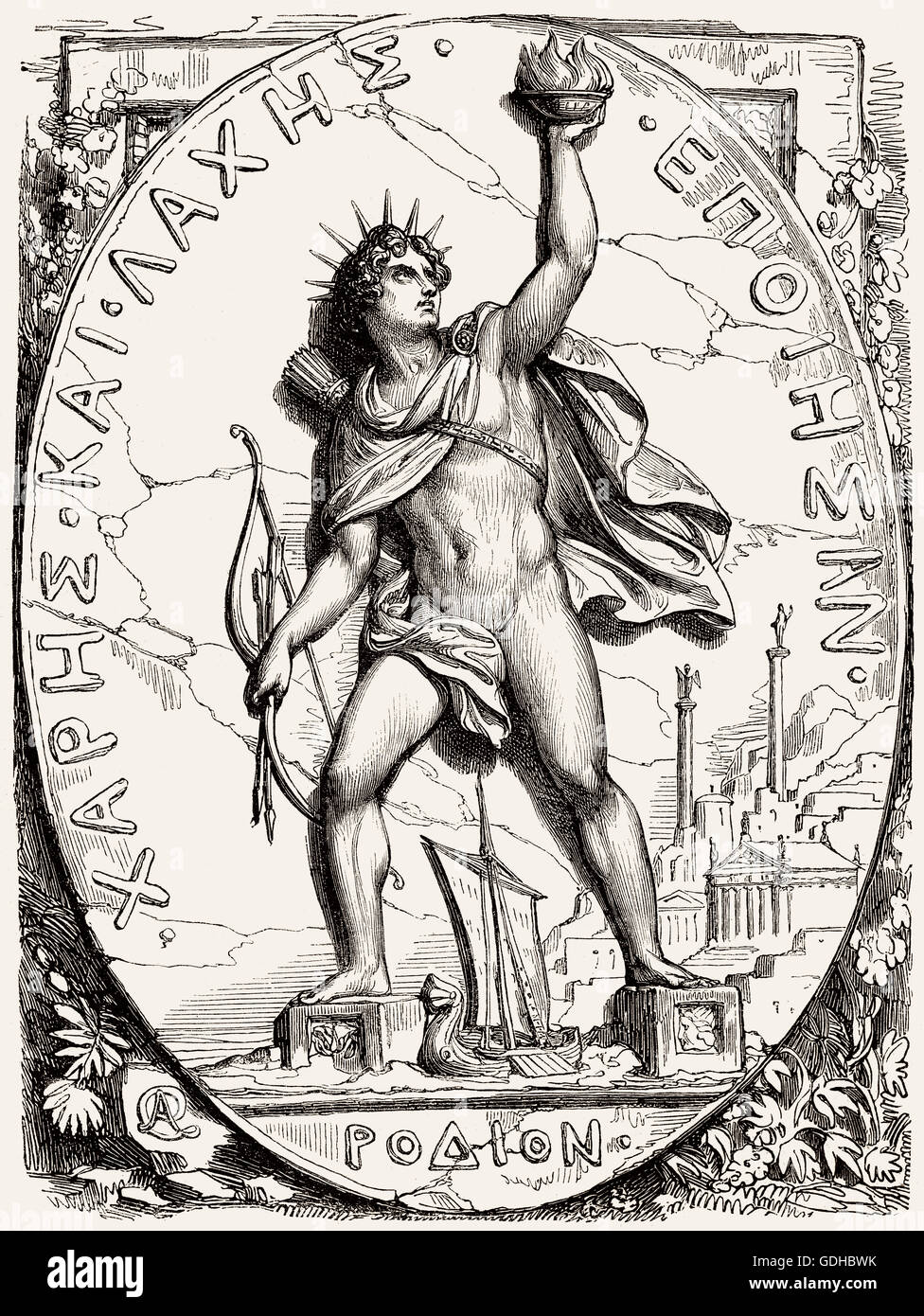

Iron beams were driven into the stone and connected with the bronze outer skin. The Colossus, which relied on weaker materials, must have weighed at least as much and probably more.Īncient accounts tell us that inside the statue were several stone columns which acted as the main support. The Statue of Liberty, roughly of the same size, weighs 225 tons. According to the book of Pilon of Byzantium, 15 tons of bronze were used and 9 tons of iron, though these numbers seem low to modern architects. The statue itself was constructed of bronze plates over an iron framework (very similar to the Statue of Liberty which is copper over a steel frame). In addition, such a pose would mean shutting down the harbor during the construction, something not economically feasible.

No ancient account mentions the harbor-spanning pose and it seems unlikely the Greeks would have depicted one of their gods in such an awkward manner. Some think it was wearing a spiked crown, shading its eyes from the rising sun with its right hand, or possibly using that hand to hold a torch aloft in a pose similar to one later given to the Statue of Liberty. Historians believe the figure was nude or semi-nude with a cloak over its left arm or shoulder. Although the statue has sometimes been popularly depicted with its legs spanning the harbor entrance so that ships could pass beneath, it was actually posed in a more traditional Greek manner. Modern engineers have put forward a plausible hypothesis for the statue construction, based on the technology of those days (which was not based on the modern principles of earthquake engineering), and the accounts of Philo and Pliny who both saw and described the remains.]The statue was one hundred and ten feet high and stood upon a fifty-foot pedestal near the harbor entrance perhaps on a breakwater. However, according to Pliny, a historian who lived several centuries after the Colossus was built, construction took 12 years. Most likely the construction started in 292 BC This belief seems more true even, though it’s often said that work over it began in 304 BC. Construction was left to the direction of Chares, a native of Lindos in Rhodes, who had been involved with large-scale statues before. To celebrate their victory, the Rhodians sold the equipment left behind for 300 talents]and decided to use the money to build a colossal statue of their patron god, Helios. In 304 BC a relief force of ships sent by Ptolemy arrived, and Demetrius’s army abandoned the siege, leaving most of their siege equipment. Demetrius tried to build number of siege towers in order to get access to the walls. In 305 BC he had his son Demetrius Poliorcetes, also a general, invade Rhodes with an army of 40,000 however, the city was well-defended and it was nearly impossible to get through the walls, which was around the city. As a result Ptolemy took control of Egypt, Rhodes and Ptolemaic Egypt formed an alliance which controlled much of the trade in the eastern Mediterranean.Īntigonus I Monophthalmus was upset by this turn of events. After the death of Alexander the Great in 323 BC, his heritage was left without a assigned governor as much as Alexander couldn’t call the name of future emperor. Fighting broke out among his generals, the Diadochi, with four of them eventually dividing much of his empire in the Mediterranean area. Thus, it was ruled by such well-known conqueror as Alexander the Great. Capturing this blossoming territory meant holding the reins of the economic at hand. It was often the reason of wars which lasted for centuries. and was designed to take advantage of the island’s best natural harbor on the northern coast. The capitol city, also named Rhodes, was built in 408 B.C. It is located off the southwestern tip of Asia Minor where the Aegean Sea meets the Mediterranean. The storyline along the statue goes as following: The island of Rhodes was an important economic center in the ancient world. Before its destruction, the Colossus of Rhodes stood over 30 meters (107 ft) high, making it one of the tallest statues of the ancient world. It was constructed to celebrate Rhodes’ victory over the ruler of Cyprus, Antigonus I Monophthalmus, who unsuccessfully besieged Rhodes in 305 BC. It is considered one of the Seven Wonders of the Ancient World.

The Colossus of Rhodes was a statue of the Greek Titan Helios, erected in the city of Rhodes on the Greek island of Rhodes by Chares of Lindos between 292 and 280 BC.


 0 kommentar(er)
0 kommentar(er)
